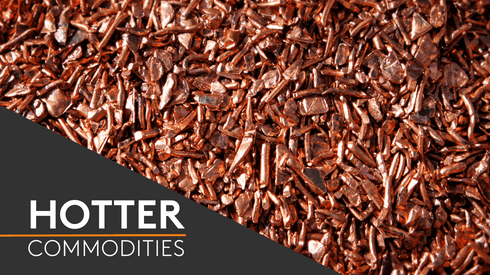Base metals prices declined as one across December 2018 when fears over trade-war induced global growth shortfalls reached fever pitch, with selloffs across asset classes.
But since the start of 2019 metals have taken on their own individual dynamics, trading less as a bunch despite economic growth indicators continuing to lag.
The shift comes with some metals such as copper and lead heading for forecast refined deficits in 2019 while tin has come under severe supply constraints.
“The macro deteriorated notably in the course of 2018 due to the escalating US-China trade dispute, which triggered a broad-based sell-off across the base metals as a result of significant negative macro flows, regardless of the different fundamental dynamics across the complex,” Fastmarkets MB analyst Boris Mikanikrezai said.
“Since the start of the year, however, the macro has improved and become less volatile, which has allowed fundamentals to reassert themselves insofar as the macro influence becomes less dominant in base metals pricing,” he added.
Mikanikrezai is charting the correlation of daily movements in individual base metals against that of the rest of the complex. This cross-correlation analysis allows the assessment of the explanatory power of the macro vs the fundamentals on base metals returns.
Metal prices moving in a contrary fashion to others indicates trade based on individual dynamics. This has been the case since trading started this year.
“What we see is all the correlations are going down, which means that base metals become increasingly driven by their own idiosyncratic factors,” Mikanikrezai said.
Tin leads the swing
One of the most affected base metals by this trend is tin, for which cross-correlation tumbled from 80% at the end of last year to only 45% in February, a statistical signal that tin prices are now increasingly more responsive to fundamentals relative to the macro factors.
Tin’s cash price on the LME has risen by 9% since the start of the year to trade at $21,250 per tonne recently, the sharpest price incline of the complex.
Refined tin exports from Indonesia, the world’s top shipper of the metal, have been significantly disrupted since the suspension of key smelter inspector PT Surveyor Indonesia in October. Only state-owned PT Timah is officially allowed to export tin, which has resulted in a substantial fall in trades on the Indonesia Commodity & Derivatives Exchange (ICDX).
With tin market participants persistently drawing on LME supply, total on-warrant inventories dropped to just 740 tonnes on January 24, the lowest level since 1989.
“The refined tin market is getting really tight,” Mikanikrezai said.
Copper retains macro-driven bias
Still showing an 80% correlation, movements in copper prices are consistently most in line with changes in macroeconomic factors.
The LME’s cash copper contract is up 7.2% so far this year at $6,320 per tonne, having rebounded from a 6% drop recorded over the month of December.
The metal has lacked specific shifts to supply and demand balances aside from continued delays in bringing Codelco’s Chuquicamata and Sterlite’s Tuticorin back into production.
Traditionally seen as a barometer of the health of the global economy, copper usually receives inflows of investment when markets are generally bullish on consumption of industrial goods. Conversely, market players often short the metal when the world economy is less positive.
“It shouldn’t be a surprise that copper’s correlation is the highest because it’s the most macro-driven metal in the complex,” Mikanikrezai said.
Trade resolution certainty could see trend reversal
Still, just as an escalation in trade tensions between China and the United States caused base metal prices to react as a group, so a resolution could see a broad bullish run across the complex.
“The trade dispute will continue to de-escalate so I think you’re going to have a bullish propulsion across the entire base metals complex,” Mikanikrezai said.
Macro sentiment toward China is turning more positive since the country has begun to inject near-record amounts of liquidity into its economy.
Chinese banks received around 2.8 trillion yuan ($413.9 billion) in new loans in January according to the People’s Bank of China, over double December’s 1.08 trillion yuan and just shy of the record high 2.9 trillion yuan in January 2018.
“I think it’s only a matter of time, eventually base metals will follow the positive moves in other risk assets such as Chinese equities, which have rallied strongly since the start of the year,” Mikanikrezai said.
Additional reporting by Hassan Butt




